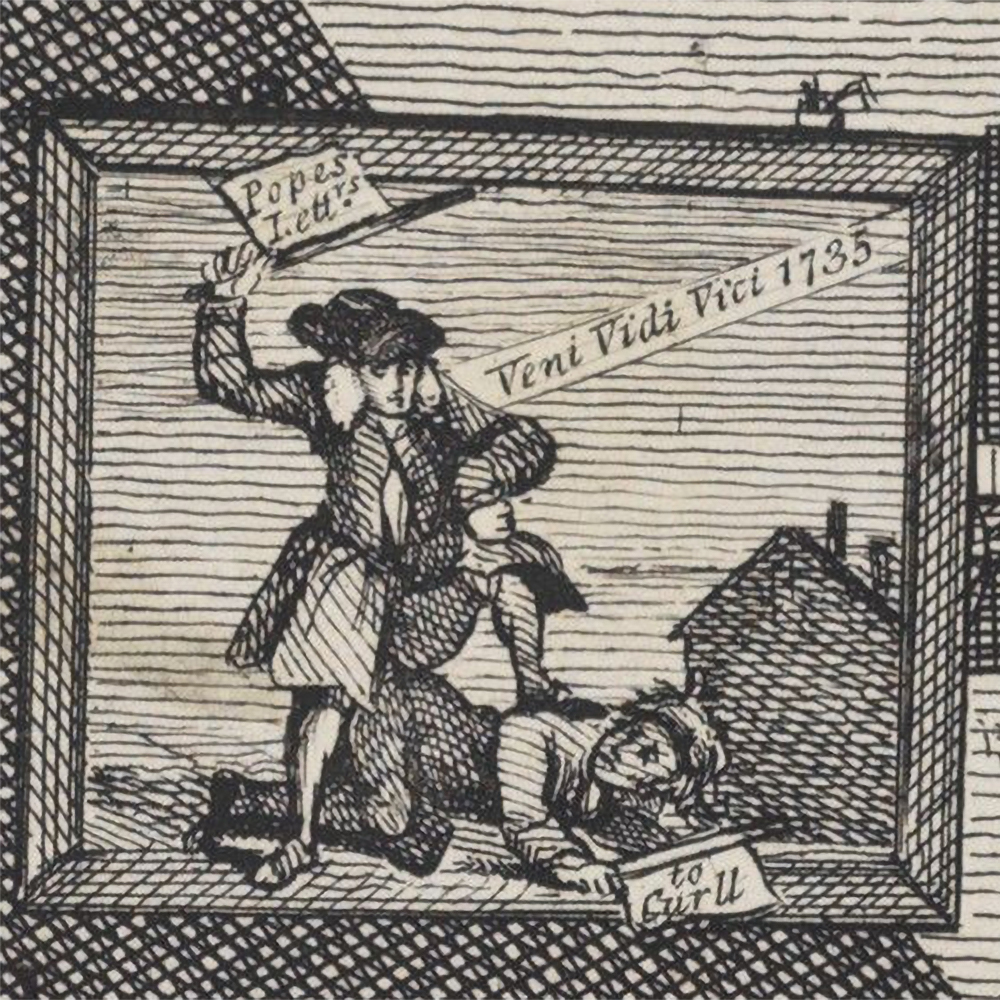
Alexander Pope and Edmund Curll
by William Hogarth
1736 (pub. 1794)
Lewis Walpole Library, Yale University Library, Hogarth 794.01.20.05 Impression 2 Box 135
Detail from a print depicting Lewis Theobald as one of Alexander Pope's dunces, scribbling in a garret.
The painting behind Tibbald appears to be a commentary on the avaricious trade in authors’ works by greedy booksellers and complicit writers and editors unequal to the task of original composition. The image features Pope and the bookseller Edmund Curll, another of Pope’s dunces. Though commenters have suggested that Pope is thrashing Curll here, the opposite seems more likely. Lying on the ground, physically weaker with a curved spine and in the signature pose and cap from Vertue's 1722 portrait that appears in many later portraits and caricatures, this figure seems a truer depiction of Pope who would have hardly resembled the able-bodied man looming over him.
Assuming this is the case, Curll uses what seems to be a printer's pole with a page draped over it bearing the title “Popes Letters” (Mr. Pope’s Literary Correspondence for Thirty Years; from 1704 to 1734, which Curll had pirated to capitalise on Pope’s popularity and likely also to embarrass him by exposing his private—occasionally bawdy and vain—discourse with friends). Pope holds a rolled page bearing the text “to Curll,” a reference to his duping Curll into publishing the letters so he in turn could publish his own authorised Letters of Mr. Alexander Pope, and Several of His Friends (1737). The speech balloon issuing from Curll, reading “Veni Vidi Vici 1735,” quotes Curll’s introduction to the second volume of his pirated Correspondence (1735), in which he proclaims as the fictitious Philalethes: “in regard to all the Attacks which have been made upon him [Curll], by this petulant little Gentleman [Pope], especially the last, ‘VENI VIDI VICI.’”
—Allison Muri, September 2018, rev. July 2022
This image is provided courtesy of the Lewis Walpole Library, Yale University Library. Yale University makes digital copies of unrestricted public domain collections available for use without limitations through the University’s electronic interfaces (Yale University Policy on Open Access to Digital Representations of Works in the Public Domain from Museum, Library, and Archive Collections). The copyright term for this image is assumed to be expired.